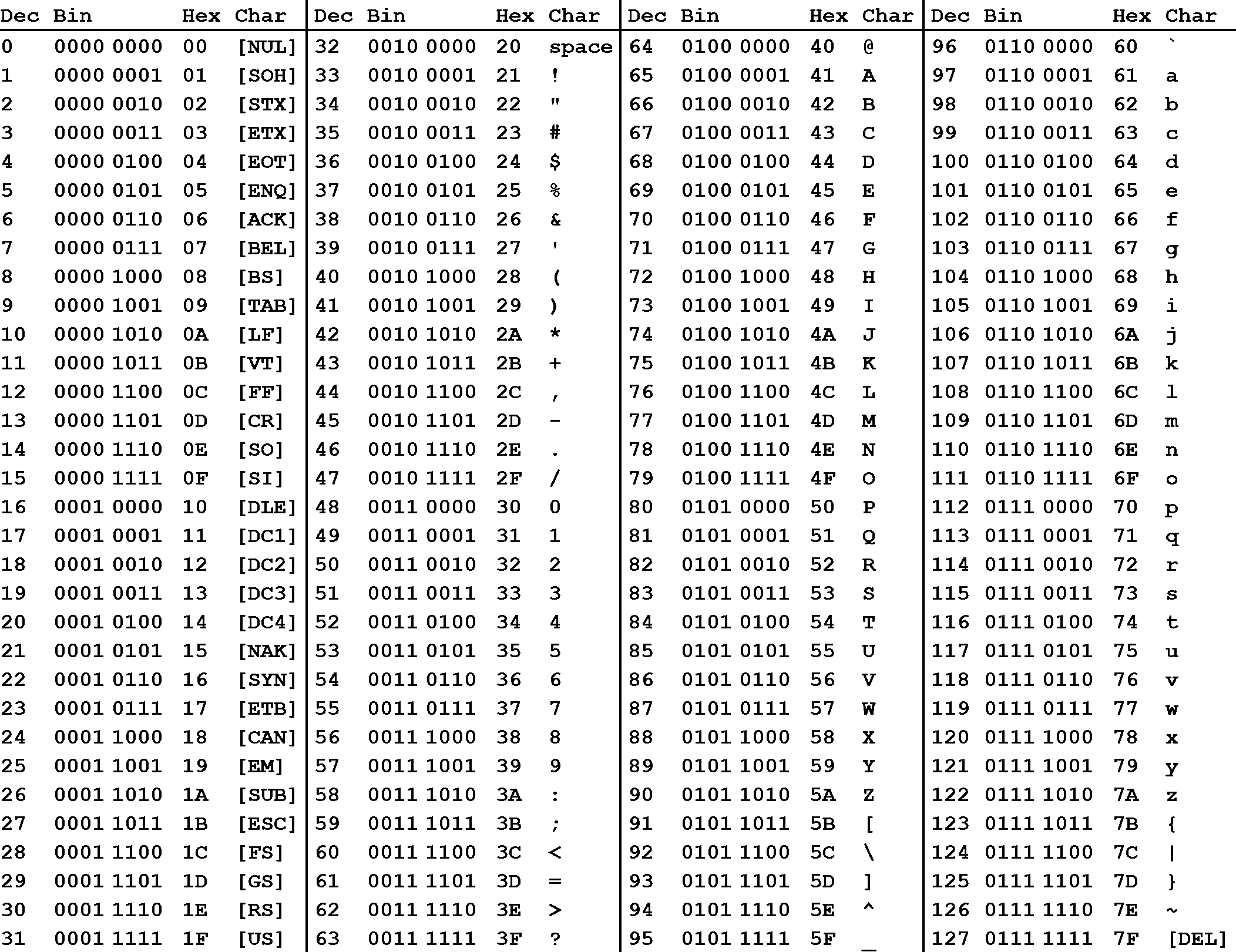
Thus, there is no support for multibyte character encodings, such as unicode encodings. Īll of the StringTools package commands treat strings as (null-terminated) sequences of 8 -bit (ASCII) characters. Any character in the printable ASCII range 0x20.
ASCII CODEPOINTS CODE
However, they can always be accessed through the long form of the command by using the form StringTools(.). A char is a Unicode scalar value, which is any Unicode code point other than a surrogate code. These functions are part of the StringTools package, and so they can be used in the form Char(.) only after executing the command with(StringTools). Thus, Char and Ord are nearly mutual inverses. Note the relations Char( Ord( s ) ) = s, for any nonempty string s, and Ord( Char( n ) ) = n, for any integer n in the range 0. Decimal: The decimal position of the codepoint. Name: The Unicode name (or parts) of the character. Given any nonempty string s, Ord s is equivalent to Ord s 1, which evaluates to the ASCII code point of the character s 1. Free search: Any information about the character, that doesn’t fit the categories below. As a special case, Ord (in which the argument is the empty string ) evaluates to 0.

The Ord(s) function maps characters to their ASCII code points. The number 0 is also accepted and, in this case, the empty string is returned. 255, evaluates to the character ( string of length one) whose ASCII code point is n.


The Char(n) function, where n is an integer in the range 1. These procedures are similar to the homonymous operators in Pascal (and its descendents) and other languages in which characters are not an integer data type. The procedures Char and Ord provide a bijective mapping between the characters that may appear in Maple strings and the integers in the range 1. This block was introduced in Unicode version 1.1 (1993). Map a number to the corresponding character


 0 kommentar(er)
0 kommentar(er)
